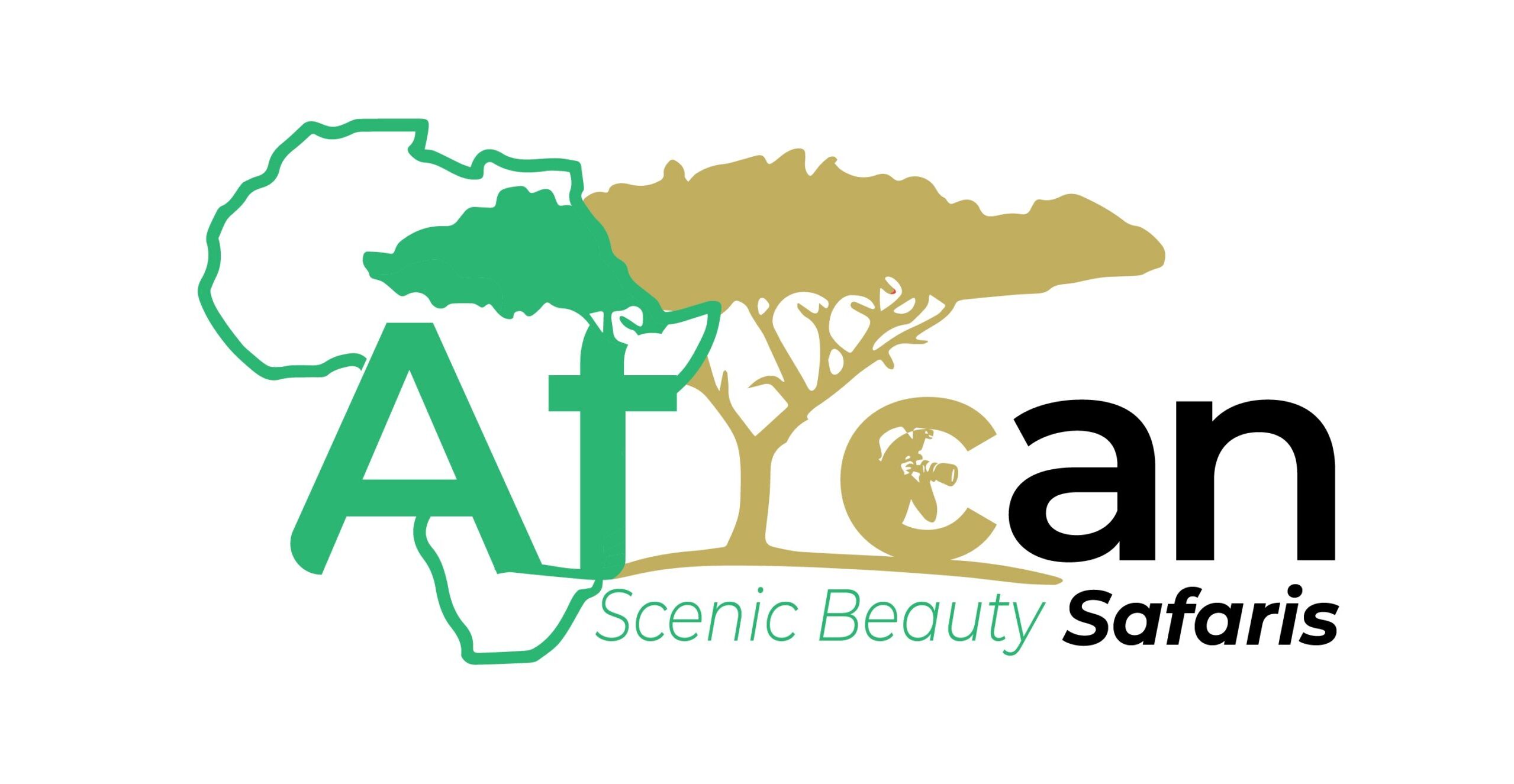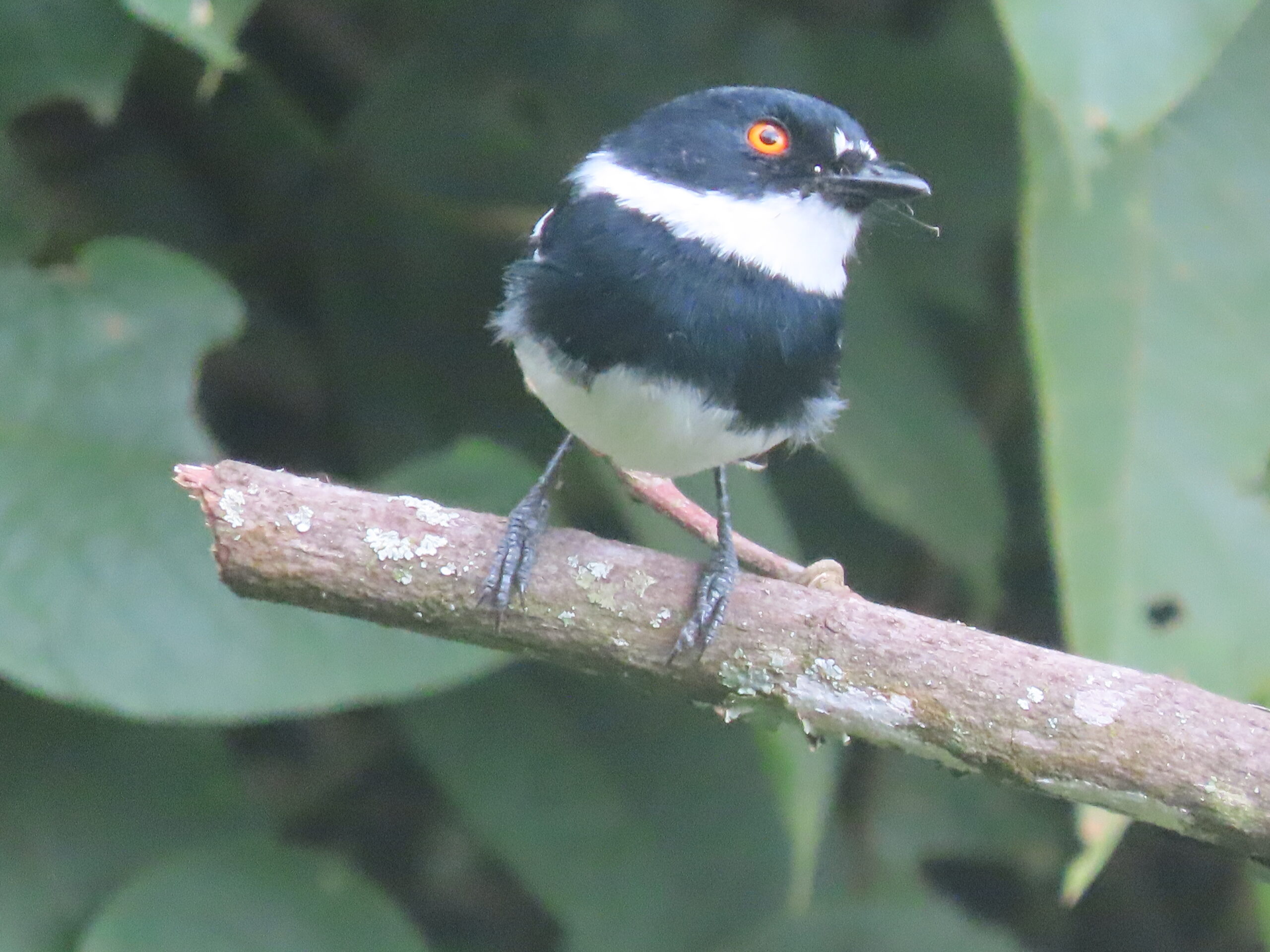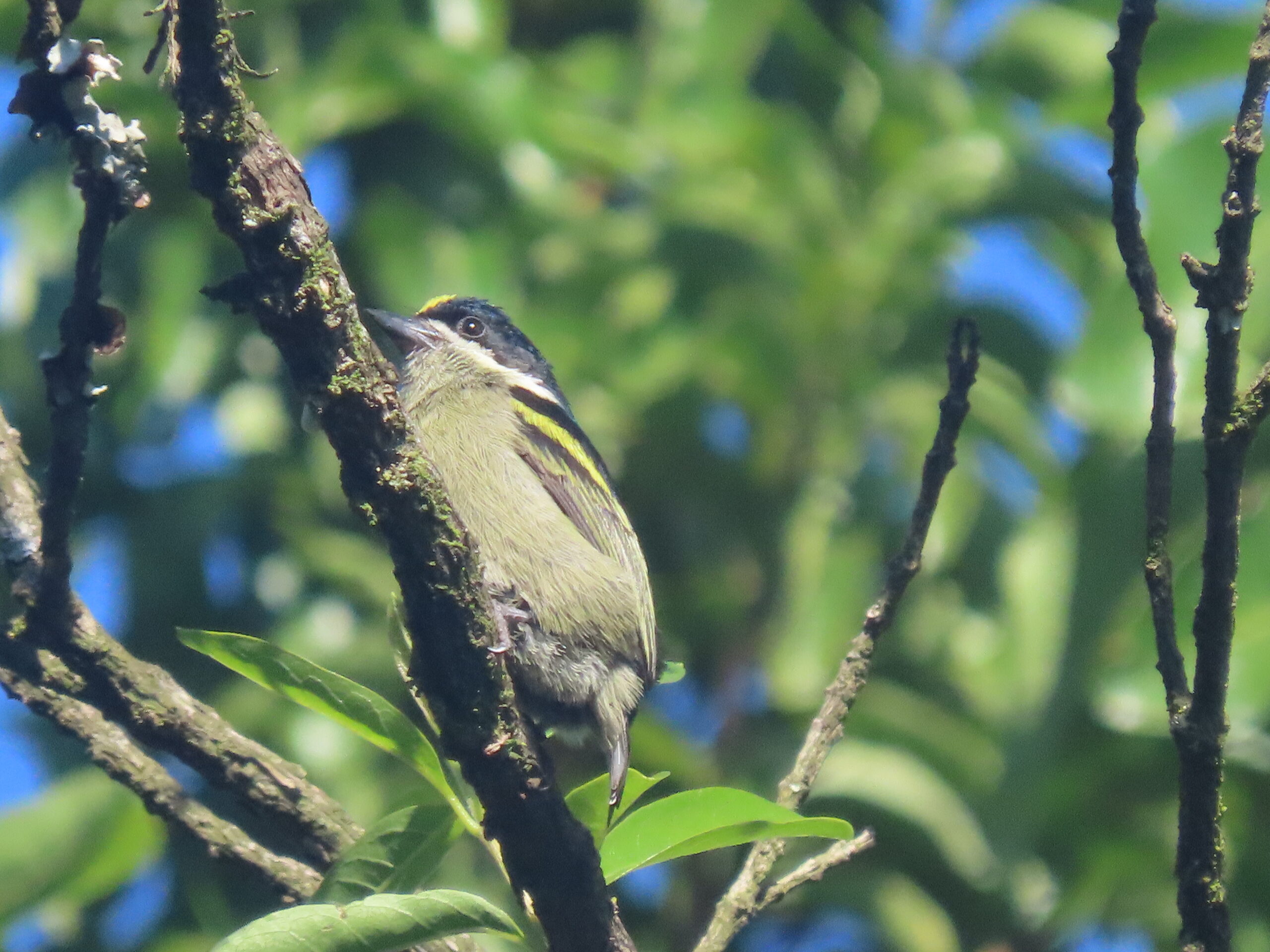14 Days 13 Nights
Uganda

14 Days Uganda Birding Trip
14 Days Uganda Birding Trip
This is a once-in-a-lifetime bird Watching and game-viewing experience. This Safari takes you to all of Uganda’s prime birding spots including Africa’s number one bird-watching spot, RUHIJA in Bwindi Impenetrable National Park. 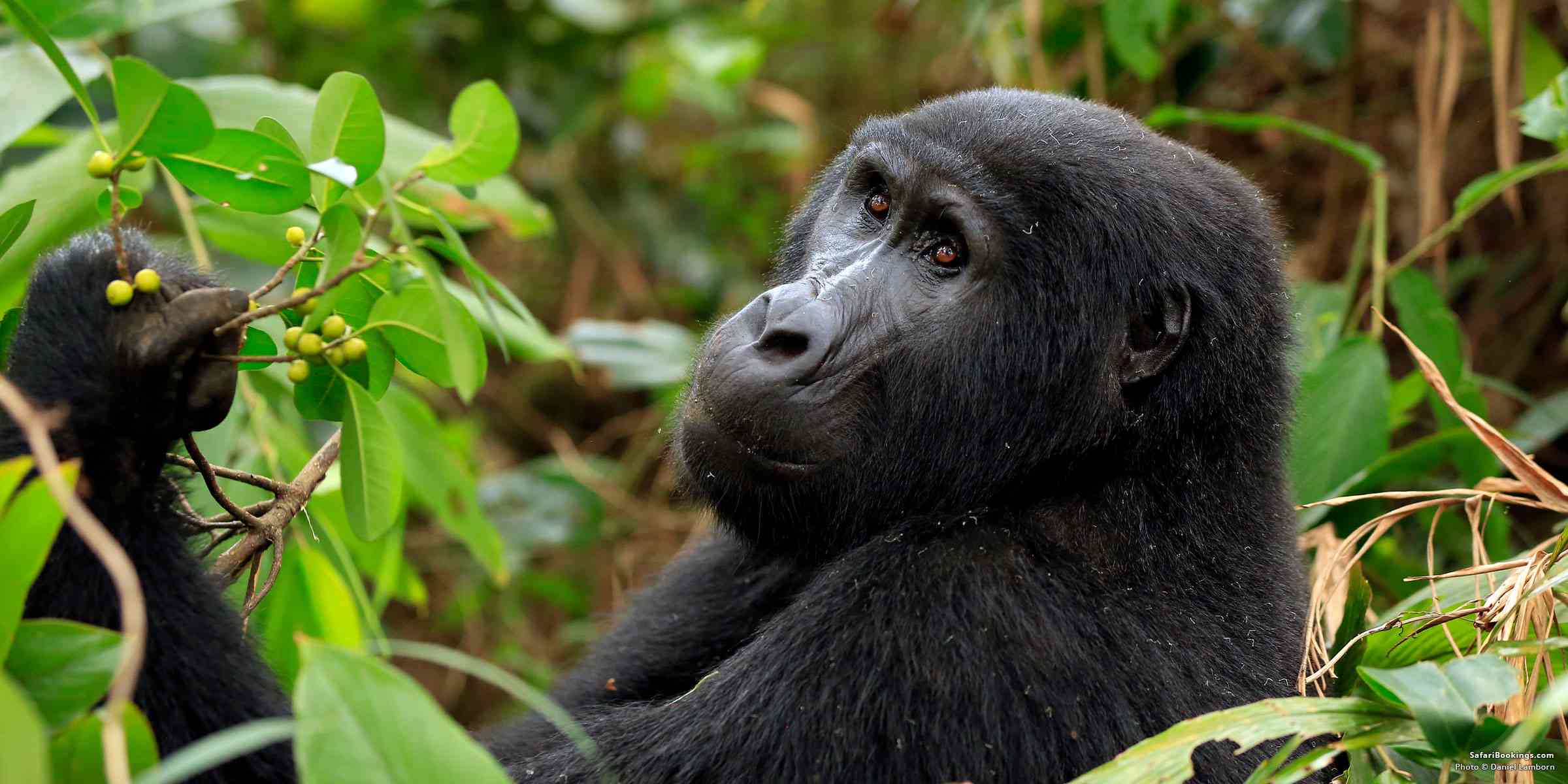 You have the opportunity to see specialties from the Albertine Rift Mountains and from the five biome species of Central and Eastern Africa to which Uganda is amidst.
You have the opportunity to see specialties from the Albertine Rift Mountains and from the five biome species of Central and Eastern Africa to which Uganda is amidst.
These biomes comprise Sudan–Guinea Savanna with 22 Ugandan species restricted to it, the Guinea–Congo Forests biome with 144 species, the Lake Victoria Basin biome with 12 species, the Afro-tropical Highlands biome with 88 species, and the Somali–Masai biome with 32 species. All the selected sites are very rich in other wildlife and flora, expect to meet a big number of mammals for example; Lions, Buffaloes, Elephants, Leopards, Hippopotamus, Warthogs, and many more.
Overview
Overview
TOUR LENGTH 14 DAYS Focus:
Birding & Game Viewing Key Species:  Shoebill Stork, Orange Weaver, Papyrus Gonolek, African Finfoot, Red-faced Barbet, Shelley’s Crimsonwing, African Green Broadbill, Handsome Francolin, Kivu Ground Thrush, Green-breasted Pitta, African Piculet, White-throated Blue Swallow, Puvel’s Illadopsis, Nahan’s Francolin, Karamoja Apalis, Fox’s Weaver, Taita Falcon expected birds, over 650 Species Birding Pace: Moderate Physical Difficulty: Moderate Group Limit: Maximum 8Birding Photography: Worthwhile Possible Extensions: Mountain Gorillas and Chimpanzees Trekking.
Shoebill Stork, Orange Weaver, Papyrus Gonolek, African Finfoot, Red-faced Barbet, Shelley’s Crimsonwing, African Green Broadbill, Handsome Francolin, Kivu Ground Thrush, Green-breasted Pitta, African Piculet, White-throated Blue Swallow, Puvel’s Illadopsis, Nahan’s Francolin, Karamoja Apalis, Fox’s Weaver, Taita Falcon expected birds, over 650 Species Birding Pace: Moderate Physical Difficulty: Moderate Group Limit: Maximum 8Birding Photography: Worthwhile Possible Extensions: Mountain Gorillas and Chimpanzees Trekking.
Itinerary
Itinerary
Day 1
Arrival
Arrival at Entebbe international airport meet and greet with your guide transfer to the Hotel. Depending on the time of arrival, we bird Entebbe botanical Gardens or Uganda Wildlife Education Center.
Day 2
Morning Birding at Mabamba Swamp and Transfer to Masindi too
Early in the morning, we bird Via Mabamba Swamps for the elusive Shoebill, Orange Weaver, Papyrus Gonolek) Some papyrus endemics, the African and Lesser Jacanas, the White-faced and Fulvous (Whistling Ducks, Blue-breasted bee-Eater, Carruthers Cisticola,
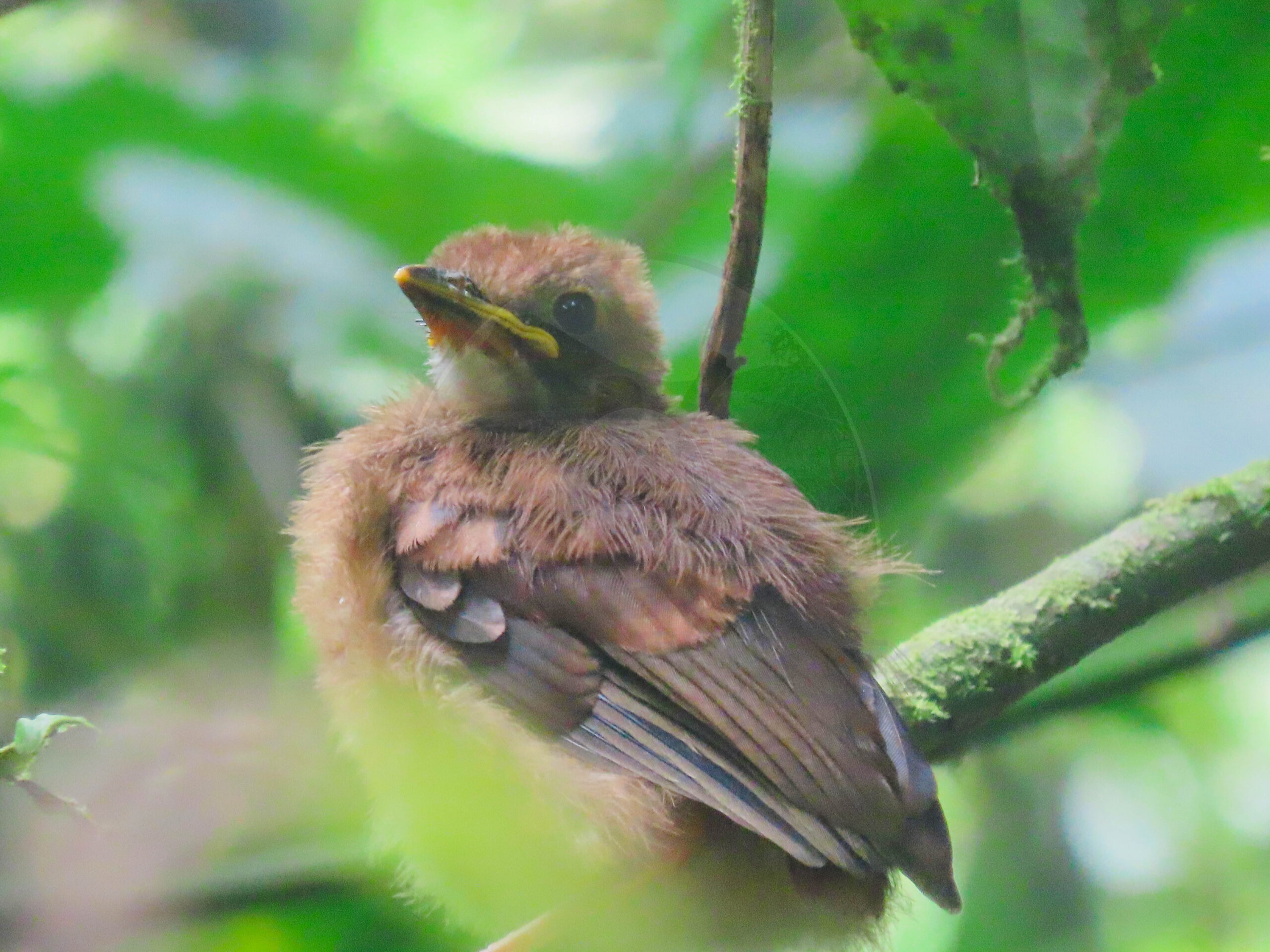 The Black-Chested, Brown and western Banded Snake Eagles, a number of Gull and Heron Species and other water birds species, from here we drive to Masindi where we will spend the night.
The Black-Chested, Brown and western Banded Snake Eagles, a number of Gull and Heron Species and other water birds species, from here we drive to Masindi where we will spend the night.Day 3
Full-day Birding Along Royal Mile
Full-day Birding Along Royal Mile and later Transfer Murchison falls national park On this day, we will bird Budongo Forest which has a prolific birdlife with two species of birds not found elsewhere in East Africa: 10 of the 22 species of the Sudan–Guinea Savanna biome and 93 of the 144 species Guinea–Congo Forests biome that occur in Uganda. We will bird the marvelous: Royal Mile and several other trails for the whole day. We will look for Ituri Batis, Puvel’s Illadopsis and Nahan’s Francolin other special birds include; the Yellow-billed Barbet, Grey-throated Barbet, Honeyguide Greenbul, Chocolate–backed Kingfisher, White-headed Saw-wing, White Wagtail, Black-eared Ground-Thrush, Little Crake, Chestnut-capped Flycatcher, African Paradise Flycatcher, Chin-spot Batis, Grey-backed Camaroptera, Lemon-bellied Crombec, African Moustached Warbler, Green-backed Eremomela, Yellow-whiskered Greenbul, African Citril, African Golden-breasted Bunting, Black-crowned Waxbill, Bronze Mannikin, Black-billed Bluebill, Black-winged Red Bishop, Yellow-mantled Widowbird, Fan-tailed Widowbird, Spectacled Weaver, Black-necked Weaver, Yellow-backed Weaver, Compact Weaver, Northern Brown-throated Weaver, Holub’s Golden Weaver, Red-headed Weaver, Yellow-billed Oxpecker, (Puvel’s Illadopsis, Nahan’s Francolin) Greater Blue-eared Starling, Purple Starling, Purple-headed Starling, Splendid Starling, Northern Puffback, Black-headed Gonolek, Tropical Boubou, Isabelline Shrike, Red-backed Shrike, Lesser Grey Shrike, Western Violet-backed Sunbird and many more
Day 4
Morning Game drive and Birding
Morning Game drive and Birding and Afternoon Boat ride Along The base Falls Today, we do Game drive birding in search for, The Giant, Pied, Malachite, Stripped, Chestnut-bellied, Blue-breasted, Woodland and the
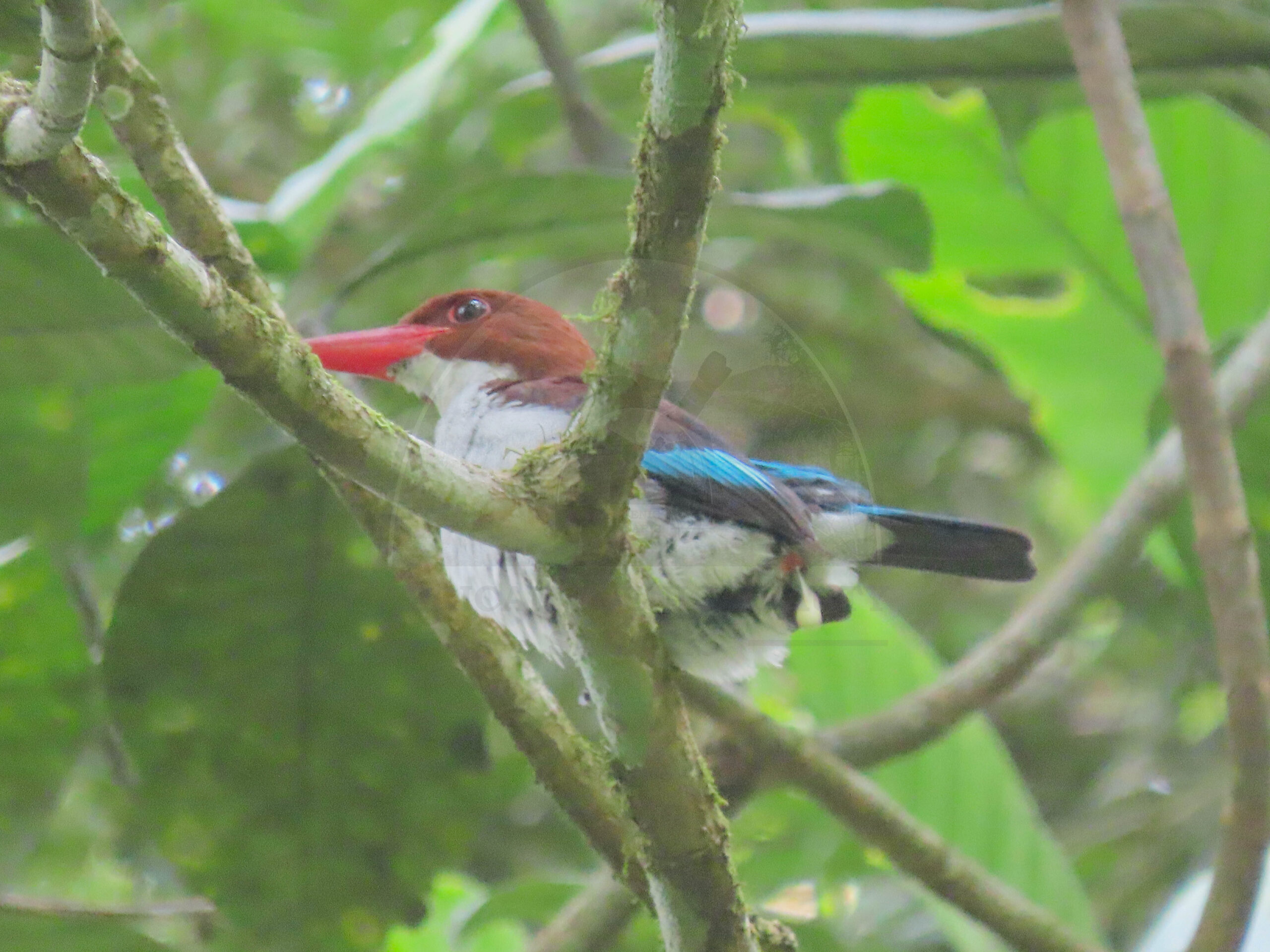 African Pygmy Kingfishers, House Martin, African Rock Martin, Lesser Stripped Swallow, Ethiopian Swallow, Angola Swallow, Red-rumped Swallow, Rufous- chested Swallow, -(Lesser Kestrel, Black-winged Pratincole, and Shoebill) Nightingale, Rock Thrush, Pied Wheatear, Whinchat, Common Redstart, White-fronted Black Chat, Sooty Chat, Isabelline Wheatear, Common Bulbul, Cameroon Sombre Greenbul, Yellow-throated Greenbul, the Black, White-breasted, and Red-shouldered Cuckoo Shrikes, the Black and Penduline Tits, the Arrow-marked, Black-lored and Brown Babblers, Nubian Woodpecker, Cardinal Woodpecker, Brown-backed Woodpecker, Lesser Honeyguide, Scaly-throated Honeyguide, Black Scimitarbill, Green Wood Hoopoe, a number of Buzzards, Barbets, Rollers, Harriers, Vultures, Eagles, Bee eaters, Warblers, and so forth. We also take a boat on the Victoria Nile for water birds like the elusive Shoebill Stork, Little Grebe, Great White and the Pink-backed Pelicans, Red-knobbed Coot, African Water Rail, Allen’s Gallinule, Black Crake, African Crake, Black-crowned Crane, Southern Pochard, The Egyptian, African Pygmy, and the Spur-winged Gooses, Storks like; the Saddle-billed, Open-billed, Abdim’s, White, Yellow-billed, Marabou, and the Wooly-necked, the Little and Dwarf Bitterns, Night Heron, Black Heron, Goliath Heron, Purple Heron, Green Backed Heron, Common Squacco Heron, Great White Egret, Cormorants, the African and Eurasian Spoonbills, the Lesser Flamingo, Lesser Jacana, African Finfoot, Painted Snipe, Wattled Plover. Later in the afternoon we take a boat cruise to the waterfalls for more water birds such as Rock pranticole, Pel’s fishing owl, Goliath Heron, Purple Heron, Grey Heron, Madagascar Squacco Heron, Cattle Egret, Red-throated Bee eater among others
African Pygmy Kingfishers, House Martin, African Rock Martin, Lesser Stripped Swallow, Ethiopian Swallow, Angola Swallow, Red-rumped Swallow, Rufous- chested Swallow, -(Lesser Kestrel, Black-winged Pratincole, and Shoebill) Nightingale, Rock Thrush, Pied Wheatear, Whinchat, Common Redstart, White-fronted Black Chat, Sooty Chat, Isabelline Wheatear, Common Bulbul, Cameroon Sombre Greenbul, Yellow-throated Greenbul, the Black, White-breasted, and Red-shouldered Cuckoo Shrikes, the Black and Penduline Tits, the Arrow-marked, Black-lored and Brown Babblers, Nubian Woodpecker, Cardinal Woodpecker, Brown-backed Woodpecker, Lesser Honeyguide, Scaly-throated Honeyguide, Black Scimitarbill, Green Wood Hoopoe, a number of Buzzards, Barbets, Rollers, Harriers, Vultures, Eagles, Bee eaters, Warblers, and so forth. We also take a boat on the Victoria Nile for water birds like the elusive Shoebill Stork, Little Grebe, Great White and the Pink-backed Pelicans, Red-knobbed Coot, African Water Rail, Allen’s Gallinule, Black Crake, African Crake, Black-crowned Crane, Southern Pochard, The Egyptian, African Pygmy, and the Spur-winged Gooses, Storks like; the Saddle-billed, Open-billed, Abdim’s, White, Yellow-billed, Marabou, and the Wooly-necked, the Little and Dwarf Bitterns, Night Heron, Black Heron, Goliath Heron, Purple Heron, Green Backed Heron, Common Squacco Heron, Great White Egret, Cormorants, the African and Eurasian Spoonbills, the Lesser Flamingo, Lesser Jacana, African Finfoot, Painted Snipe, Wattled Plover. Later in the afternoon we take a boat cruise to the waterfalls for more water birds such as Rock pranticole, Pel’s fishing owl, Goliath Heron, Purple Heron, Grey Heron, Madagascar Squacco Heron, Cattle Egret, Red-throated Bee eater among othersDay 5
Transfer Kibale Forest national Park
Early morning after breakfast, we drive through the park to Kibale National Park passing through the Albertine region southern part of the East African rift valley. Kibale National Park is the largest forested park covering an area of 795Sqkm. It’s best known for a number and variety of resident primates. An impressive list of 13 primate species which include Uganda’s largest population of Chimpanzees-an estimated 1450. Habituated groups can be tracked with experienced ranger guides in the park. Here we will see the darling Green-breasted Pitta and more forest species like the Brown Illadopsis, Brown-capped Weaver, Brown-chested Alethe, Black-headed Oriole, African Emerald Cuckoo, African Green-pigeon, Black-crowned Tchagra, African Wood Owl, African/Rwenzori/Abyssinian Hill-Babbler, Alpine Swift, Ashy Flycatcher, Barn Swallow, Black Bee-eater, Black Cuckoo, Black Cuckoo-shrike, (Green-breasted Pitta), Black-and-white Casqued Hornbill, Black-and-white Mannikin, Black-and-white Shrike-flycatcher, Black-billed Turacco,
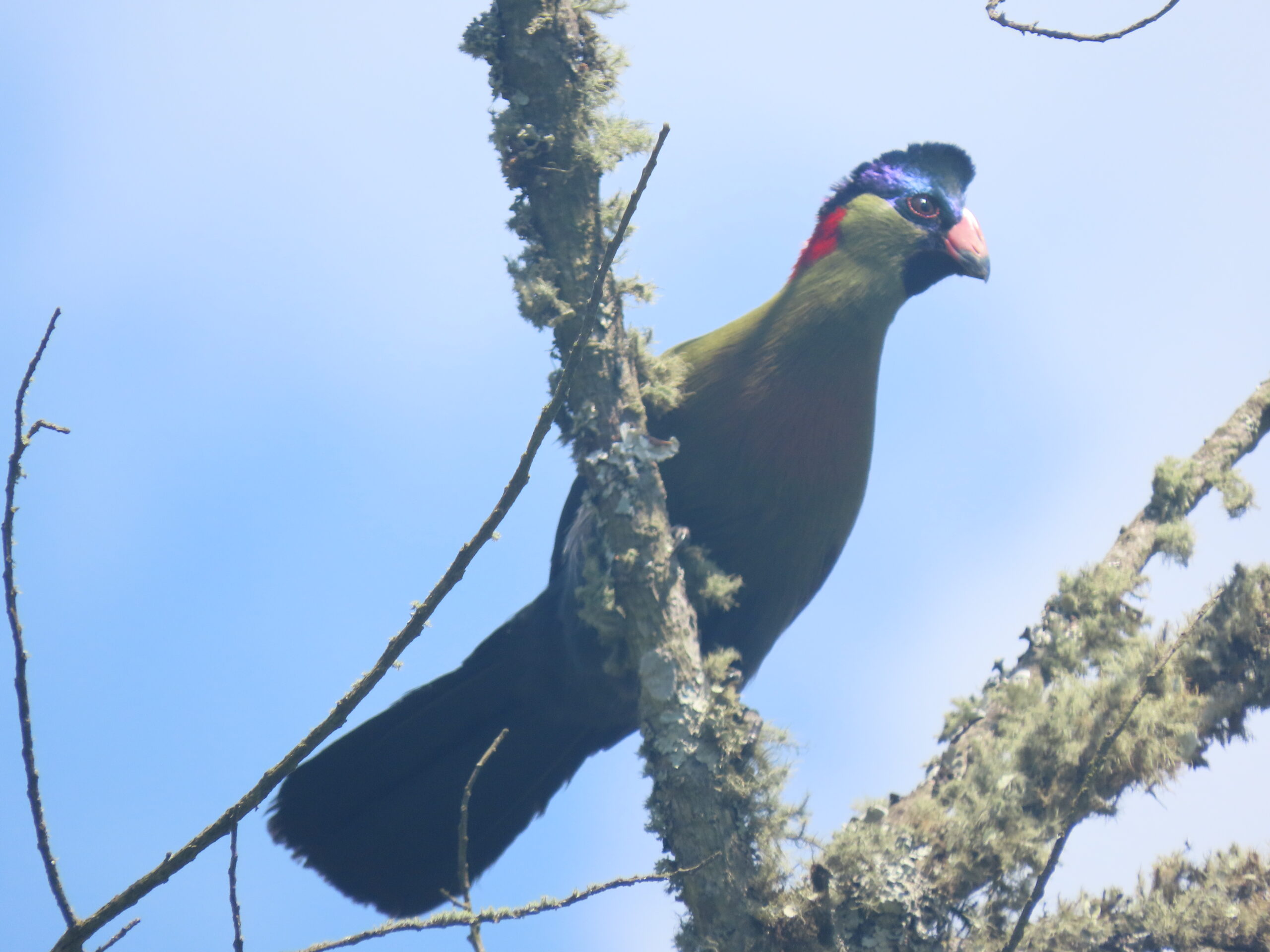 Black-billed Weaver, Black-faced Rufous Warbler, African Dusky Flycatcher, Black-headed Weaver, Black-necked Weaver, African Citril (Western Citril), Black-throated Apalis, Blue-shouldered Robin-chat, Blue-throated Brown Sunbird, Blue-throated Roller, African Blue Flycatcher, Bocage’ Bush-shrike, Bronze Mannikin, Zebra Waxbill, Bronze Sunbird and many more. Later in the evening we will have Bigodi Swamp walk where we will look up for more other species of Birds and monkeys such as the Black & White Colobus, Black-Faced Vervet Monkey, Red tailed monkey, Grey-Cheeked Mangabey, L’Hoest Monkey, and blue monkeys
Black-billed Weaver, Black-faced Rufous Warbler, African Dusky Flycatcher, Black-headed Weaver, Black-necked Weaver, African Citril (Western Citril), Black-throated Apalis, Blue-shouldered Robin-chat, Blue-throated Brown Sunbird, Blue-throated Roller, African Blue Flycatcher, Bocage’ Bush-shrike, Bronze Mannikin, Zebra Waxbill, Bronze Sunbird and many more. Later in the evening we will have Bigodi Swamp walk where we will look up for more other species of Birds and monkeys such as the Black & White Colobus, Black-Faced Vervet Monkey, Red tailed monkey, Grey-Cheeked Mangabey, L’Hoest Monkey, and blue monkeysDay 6
Chimpanzee Tracking in Kibale forest
Chimpanzee Tracking in Kibale Forest and Afternoon Bigodi Wetland Sanctuary Early morning after breakfast we drive to the Park where we meet our ranger guides for briefing and
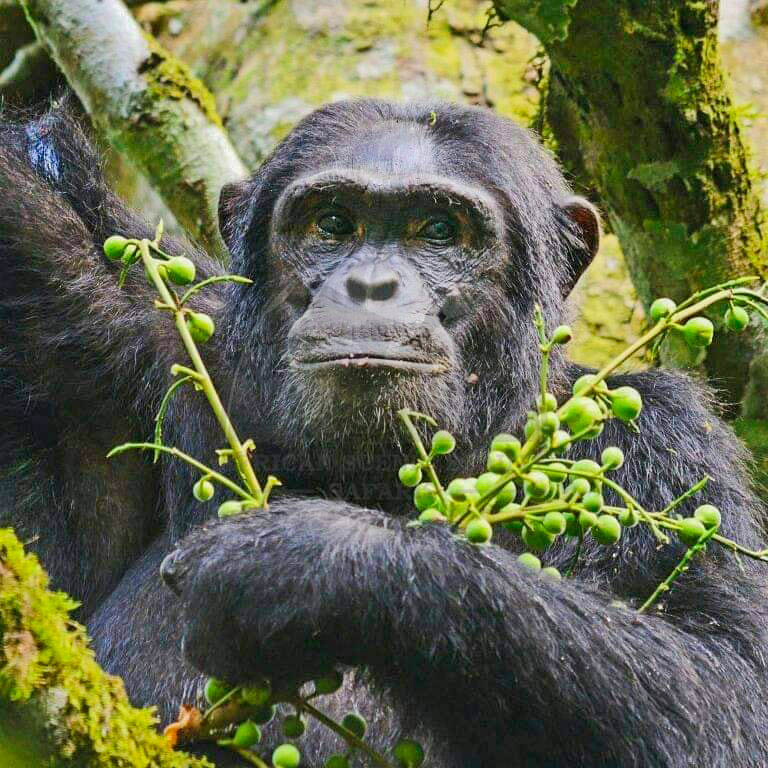 chimpanzee tracking. The perennially popular primate walk provides a chance to observe Chimpanzees in their natural habitat. Kanyanchu’s groups are accustomed to human presence- some have been observed for over 25 years and the chance of locating them is over 90%We will have lunch at the primate lodge, and later after lunch we visit the Bigodi swamp for more primates and birds. The place is known for the Blue monkey, Black and white colobus monkey, Red-tailed monkey, Grey checked mangabey, and many others. Kibale national park is the primate capital of East Africa. Chimpanzee tracking is a fulfilling adventure that takes you deep in the tropical forest across streams of water. You may also have sightings of red-tailed monkeys, black-and-white Columbus monkeys, butterflies, and birds calling from the canopies. With the help of your guide, you will locate the chimps. Enjoy picture moments and observe them as they play and feed. After lunch – visit Bigodi Village and swamp known for its rich diversity of birds and primates depending on the availability of time
chimpanzee tracking. The perennially popular primate walk provides a chance to observe Chimpanzees in their natural habitat. Kanyanchu’s groups are accustomed to human presence- some have been observed for over 25 years and the chance of locating them is over 90%We will have lunch at the primate lodge, and later after lunch we visit the Bigodi swamp for more primates and birds. The place is known for the Blue monkey, Black and white colobus monkey, Red-tailed monkey, Grey checked mangabey, and many others. Kibale national park is the primate capital of East Africa. Chimpanzee tracking is a fulfilling adventure that takes you deep in the tropical forest across streams of water. You may also have sightings of red-tailed monkeys, black-and-white Columbus monkeys, butterflies, and birds calling from the canopies. With the help of your guide, you will locate the chimps. Enjoy picture moments and observe them as they play and feed. After lunch – visit Bigodi Village and swamp known for its rich diversity of birds and primates depending on the availability of timeDay 7
Transfer Semuliki and Birding along Kirumi Trail
Early morning after breakfast we drive straight to
 Semliki Forest National Park. Here, we will go to the forest and take on the Kirumi trail for our whole day birding experience. The alluring bird list with albertine rift valley endemic, Semliki specials and other restricted bird guides specials, makes Semliki an essential destination for serious birders. We look out for a number of predominantly Central African species which cannot be found anywhere else in East Africa yet are some of the continent’s most spectacular and sought-after birds such as; Long-tailed Hawk, Congo Serpent Eagle, Lyre-tailed Honeyguide, Black and White casqued Hornbill, the Nkulengu Rail, and other species; Blue Swallow, White-throated Swallow, Swamp Palm Bulbul, Spotted Greenbul, White-starred Robin, Lowland Akalat, Red-throated Alethe, Fire-crested Alethe, Snowy-headed Robin-Chat, Blue-shouldered Robin-Chat, Red-eyed Puff back, White-tailed Robin-Chat, Northern Bearded Scrub-Robin, Capped Wheatear, Common Stonechat, Abyssinian Ground-Thrush, Oberlaender’s Ground-Thrush, Grey Ground-Thrush, Little Grey Greenbul, Toro Olive Greenbul, Mountain Greenbul, (African Piculet, Great Snipe, Sassi’s Greenbull, and White-throated Blue Swallow) Yellow-throated Nicator, Western Nicator, just to mention but a few. There is a single, unconfirmed report of the globally threatened Lesser Kestrel.
Semliki Forest National Park. Here, we will go to the forest and take on the Kirumi trail for our whole day birding experience. The alluring bird list with albertine rift valley endemic, Semliki specials and other restricted bird guides specials, makes Semliki an essential destination for serious birders. We look out for a number of predominantly Central African species which cannot be found anywhere else in East Africa yet are some of the continent’s most spectacular and sought-after birds such as; Long-tailed Hawk, Congo Serpent Eagle, Lyre-tailed Honeyguide, Black and White casqued Hornbill, the Nkulengu Rail, and other species; Blue Swallow, White-throated Swallow, Swamp Palm Bulbul, Spotted Greenbul, White-starred Robin, Lowland Akalat, Red-throated Alethe, Fire-crested Alethe, Snowy-headed Robin-Chat, Blue-shouldered Robin-Chat, Red-eyed Puff back, White-tailed Robin-Chat, Northern Bearded Scrub-Robin, Capped Wheatear, Common Stonechat, Abyssinian Ground-Thrush, Oberlaender’s Ground-Thrush, Grey Ground-Thrush, Little Grey Greenbul, Toro Olive Greenbul, Mountain Greenbul, (African Piculet, Great Snipe, Sassi’s Greenbull, and White-throated Blue Swallow) Yellow-throated Nicator, Western Nicator, just to mention but a few. There is a single, unconfirmed report of the globally threatened Lesser Kestrel.Day 8
Transfer Queen Elizabeth National Park
For a morning Game Drive and Afternoon Boat Ride along Kazinga Channel Early in the Morning we leave for a game drive in Queen Elizabeth National Park. Queen Elizabeth National Park is Uganda’s most popular protected area. Diverse ecosystems including sprawling savannah, shady forests, sparkling lakes, and bush wetlands provide ideal habitats for classic big games, forest primates and birds. These varied habitats support a wealth of wildlife with more mammal species (95) than any other Ugandan park and over 600bird species- a phenomenal number for such a small area as it covers only less than 2000Sqkm. Expect to see Safari favorites such as elephant, buffalo and hippos while the chances of finding lions on the plains of Kasenyi and Ishasha are good. Here we will see Savanna Species such as Red-headed lovebird, Little Weaver, Black headed gonorek, Slender-billed Weaver, Black-headed weaver , Spur-winged Lapwing and in the afternoon we take a boat ride on the Kazinga Channel for water birds like the Great White and Pink-backed Pelicans, African Skimmer, Yellow-billed and
the Saddle-billed storks, African Wattled Lapwing, Long-toed Lapwing, Black-winged Stilt, Water Thick-knee, Collared Pratincole, -(Lesser Kestrel & Lesser Flamingo) the Grey-headed, Black-headed and Slender-billed Gulls, Grebes, Ducks and many more. In the evening we go for a boat cruise at Kazinga channel.
Day 9
Transfer To Bwindi Impenetrable national Park
Through Ishasha Sector Early morning after breakfast we drive to the park through the Ishasha sector for game viewing like lions, Uganda kob, elephants, hyenas, waterbuck, buffalos, hippopotamus, and many birds. An abundance of magnificent vistas includes the jagged backdrop of the Rwenzori Mountains; rolling hills pocked with extinct volcanic craters; open rift valley. Later in the afternoon, we transfer to Bwindi Impenetrable National Park. The world’s population of Mountain Gorillas t is slightly over 800 mountain Gorillas. Uganda is home to more than half the population of these beautiful, majestic gentle giants and yet endangered apes. Therefore, gorilla trekking in Uganda is a must-do experience not to be missed. Bwindi impenetrable forest habituates families of mountain Gorillas along with other species of primates for example, Chimpanzees, Colubus monkeys, Olive baboons. To be certain of going gorilla trekking, it is a must you buy a permit which is issued by the Uganda Wildlife Authority (UWA) at USD 600 only. It is our duty to arrange this for you should you be interested in this memorable activity.
Day 10
Gorilla Trekking Experience and Visit Batwa Community Experience
Early morning after breakfast we drive to the Visitors’ Information Center with our packed lunch and walking sticks to meet the ranger guides who will brief about
 the gorilla Trekking experience. The highlight of a visit to Bwindi is a magical hour in the company of a family of Mountain Gorillas. Trekking the Gorillas can last for a few hours to the whole day depending on how far the group has moved since it was last observed nesting up the previous evening. Contact time with the gorillas is restricted to 1hour and participants must be aged 15yrs or over. After Trekking, visitors will do a community walk through forest edge villages which provide insights into the lives of the Local Batwa (Pygmy) and Bakiga peoples.
the gorilla Trekking experience. The highlight of a visit to Bwindi is a magical hour in the company of a family of Mountain Gorillas. Trekking the Gorillas can last for a few hours to the whole day depending on how far the group has moved since it was last observed nesting up the previous evening. Contact time with the gorillas is restricted to 1hour and participants must be aged 15yrs or over. After Trekking, visitors will do a community walk through forest edge villages which provide insights into the lives of the Local Batwa (Pygmy) and Bakiga peoples.Day 11
Birding along Buhoma sector
Birding along Buhoma sector Of Bwindi Impenetrable National Park Early morning after breakfast we go birding in Buhoma, Bwindi Impenetrable National Park. Here, we look out for species like, the Black Bee-Eater, Dusky Tit, Brown-caped Weaver, Yellow-billed and yellow-spotted Barbets, the African and
 Black-and-white Shrike Flycatchers, Common Stonechat, Brown-throated and Chestnut Wattle-eyes, Apalises, Equatorial Akalat, White-eyed Slaty Flyacatcher, White-bellied Robin-Chat, Black-throated Apalis, Mountain Masked Apalis, Grey Apalis, Chestnut-throated Apalis, the Olive-green and Grey-backed Camaroptera, White-chinned Prinnia, Green Hylia, Short-tailed Warbler, White-tailed Anti-thrush, Cape Wagtail, Grey-capped Warbler, Black-faced Rufous Warbler, Red-faced Woodland Warbler, Grauer’s Warbler, Grauer’s Rush Warbler, White-browed Crombec, to mention but a few.
Black-and-white Shrike Flycatchers, Common Stonechat, Brown-throated and Chestnut Wattle-eyes, Apalises, Equatorial Akalat, White-eyed Slaty Flyacatcher, White-bellied Robin-Chat, Black-throated Apalis, Mountain Masked Apalis, Grey Apalis, Chestnut-throated Apalis, the Olive-green and Grey-backed Camaroptera, White-chinned Prinnia, Green Hylia, Short-tailed Warbler, White-tailed Anti-thrush, Cape Wagtail, Grey-capped Warbler, Black-faced Rufous Warbler, Red-faced Woodland Warbler, Grauer’s Warbler, Grauer’s Rush Warbler, White-browed Crombec, to mention but a few.Day 12
Transfer to Lake Mburo National Park
Early Morning after Breakfast we transfer to
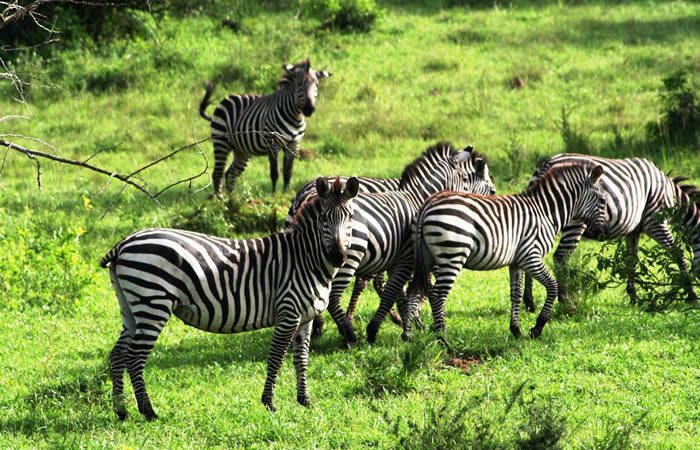 Lake Mburo National Park. A compact jewel of a park, Lake Mburo is ideally placed for an overnight break between Kampala and the protected areas of Western Uganda. A mosaic of habitats includes rock outcrops, savannah, acacia woodlands, bush, forest, swamp and lakes that support a wealth of wildlife including species that are rare or absent from other parks in Uganda, Birding is also rich with papyrus and acacia species being particularly well represented. Though Lake Mburo is 370sqkms area is small compared to many East African parks; it contains an impressive biodiversity of wildlife with 69mammal species and 332bird species. A number of park’s herbivores are rarely if at all found elsewhere in Uganda. Lake Mburo is the only Park that contains Impalas, and only one in Western Uganda with Zebras and Eland. The topi are only found elsewhere in Queen Elizabeth National park. The species’ list was extended in 2015 when a number of Rothschild’s Giraffe were relocated to Lake Mburo from Murchison falls National Park. Bird species to expect include the African Finfoot, Coqui, and the Red-winged Francolins, Blue-spotted Wood Dove, Brown Parrot, Barefaced Go-away bird, Harlequin and Blue Quails, Common Button Quail, White-headed and Black-billed Barbet, Greenwood Hoopoe, Common Scimitarbill, Blue-napped Mousebird, Blue-breasted and Shining-blue Kingfishers, Lilac-breasted Roller, African-grey Hornbill, the Nubian, Buff-spotted, Brown-eared, and the Grey Woodpeckers, Trilling, Stout, and Wing-snapping Cisticolas, Red-necked spurfowl, Black-bellied Bustard, Temminck’s Courser, African-wattled Plover Rufous napped and Flappet larks, Rufous-chested Swallow ,Yellow-throated Longclaw, Black-winged Bishop, Chubb’s, Carruther’s and a number of other Cisticolas, the Lesser and Great Swamp Warblers, Black Crake, Common Squacco, Striated, Goliath, Purple, Black-headed, Grey, and Black-headed Herons, Great White and Pink-backed Pelicans, the African Fish Eagle, (African Finfoot, Papyrus Yellow Warbler & Red-faced Barbet) among others.
Lake Mburo National Park. A compact jewel of a park, Lake Mburo is ideally placed for an overnight break between Kampala and the protected areas of Western Uganda. A mosaic of habitats includes rock outcrops, savannah, acacia woodlands, bush, forest, swamp and lakes that support a wealth of wildlife including species that are rare or absent from other parks in Uganda, Birding is also rich with papyrus and acacia species being particularly well represented. Though Lake Mburo is 370sqkms area is small compared to many East African parks; it contains an impressive biodiversity of wildlife with 69mammal species and 332bird species. A number of park’s herbivores are rarely if at all found elsewhere in Uganda. Lake Mburo is the only Park that contains Impalas, and only one in Western Uganda with Zebras and Eland. The topi are only found elsewhere in Queen Elizabeth National park. The species’ list was extended in 2015 when a number of Rothschild’s Giraffe were relocated to Lake Mburo from Murchison falls National Park. Bird species to expect include the African Finfoot, Coqui, and the Red-winged Francolins, Blue-spotted Wood Dove, Brown Parrot, Barefaced Go-away bird, Harlequin and Blue Quails, Common Button Quail, White-headed and Black-billed Barbet, Greenwood Hoopoe, Common Scimitarbill, Blue-napped Mousebird, Blue-breasted and Shining-blue Kingfishers, Lilac-breasted Roller, African-grey Hornbill, the Nubian, Buff-spotted, Brown-eared, and the Grey Woodpeckers, Trilling, Stout, and Wing-snapping Cisticolas, Red-necked spurfowl, Black-bellied Bustard, Temminck’s Courser, African-wattled Plover Rufous napped and Flappet larks, Rufous-chested Swallow ,Yellow-throated Longclaw, Black-winged Bishop, Chubb’s, Carruther’s and a number of other Cisticolas, the Lesser and Great Swamp Warblers, Black Crake, Common Squacco, Striated, Goliath, Purple, Black-headed, Grey, and Black-headed Herons, Great White and Pink-backed Pelicans, the African Fish Eagle, (African Finfoot, Papyrus Yellow Warbler & Red-faced Barbet) among others.Day 13
Morning Game Drive with Birding Watching
Morning Game Drive with Birding Watching And Afternoon Boat cruise On Lake Mburo and transfer to Kampala Have an early morning breakfast before going bird watching in a game car, bird and return for lunch then later go for a boat ride in search for the African Finfoot, Coqui, and the Red-winged Francolins, Blue-spotted Wood Dove,
Brown Parrot, Barefaced Go-away bird, Harlequin and Blue Quails, Common Button Quail, White-headed and Black-billed Barbet, Greenwood Hoopoe, Common Scimitarbill, Blue-napped Mousebird, Blue-breasted and Shining-blue Kingfishers, Lilac-breasted Roller, African-grey Hornbill, the Nubian, Bu’-spotted, Brown-eared, and the Grey Woodpeckers, Trilling, Stout, and Wing-snapping Cisticolas, Red-necked spurfowl, Black-bellied Bustard, Temminck’s Courser, African-wattled Plover Rufous napped and Flappet larks, Rufous-chested Swallow ,Yellow-throated Longclaw, Black-winged Bishop, Chubb’s, Carruther’s and a number of other Cisticolas, the Lesser and Great Swamp Warblers, Black Crake, Common Squacco, Striated, Goliath, Purple, Black-headed, Grey, and Black-headed Herons, Great White and Pink-backed Pelicans, the African Fish Eagle, (African Finfoot, Papyrus Yellow Warbler & Red-faced Barbet) among others.
Day 14
Morning Birding at Entebbe Botanical Garden
Morning Birding at Entebbe Botanical Garden and Transfer to Entebbe International Airport for Departure Flight Morning birding in Entebbe botanical gardens mean while waiting for covid-19 test results and certificate later in the evening we drive back to the airport for your flight back home
Cost Info
Cost Info
Price includes
- Gorilla permit
- Transport in a 4×4 safari vehicle
- Accommodation as specified in the
- Full board accommodation with meals (13 nights).
- A Guide/Driver with excellent English-speaking skills
- Transport in a standard tour van with a pop-up roof for clear views of the park animals
- Fuel for the entire trip
- Boat cruise at the Kazinga Channel
- A game drive
- Guide and ranger fees
- Lunch and drinking water while traveling to and from the park
- Park Entrance fees
- Airport transfer
- Government taxes
- itinerary
- Lunch
- Bottled drinking water
- An experienced English-speaking tour driver/guide
- Park entry fees
- Park ranger and guiding
- Fuel
Price excludes
- The package excludes expenses of a personal nature like alcoholic drinks, cigars, laundry, personal insurance, Visas, air tickets, porter fees and tips for the Guides/Rangers.
FAQ
FAQ
FAQ 1
Map
Map
Gallery
Please select date
from Free
